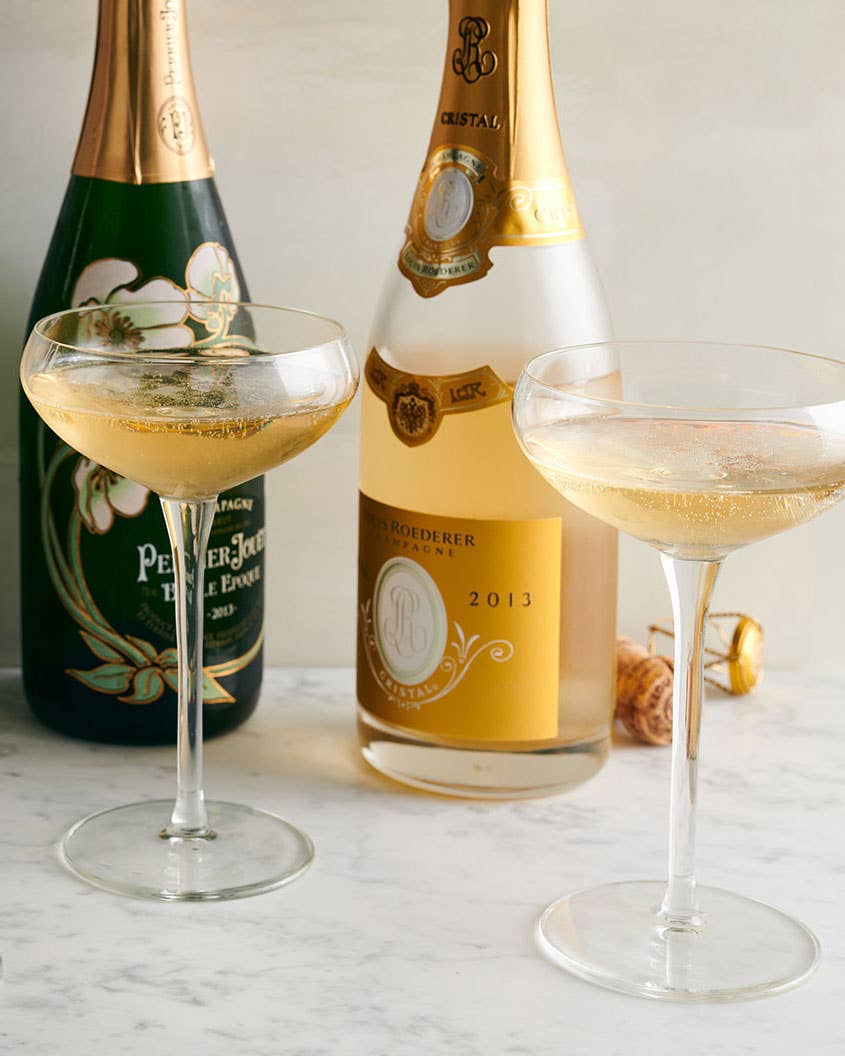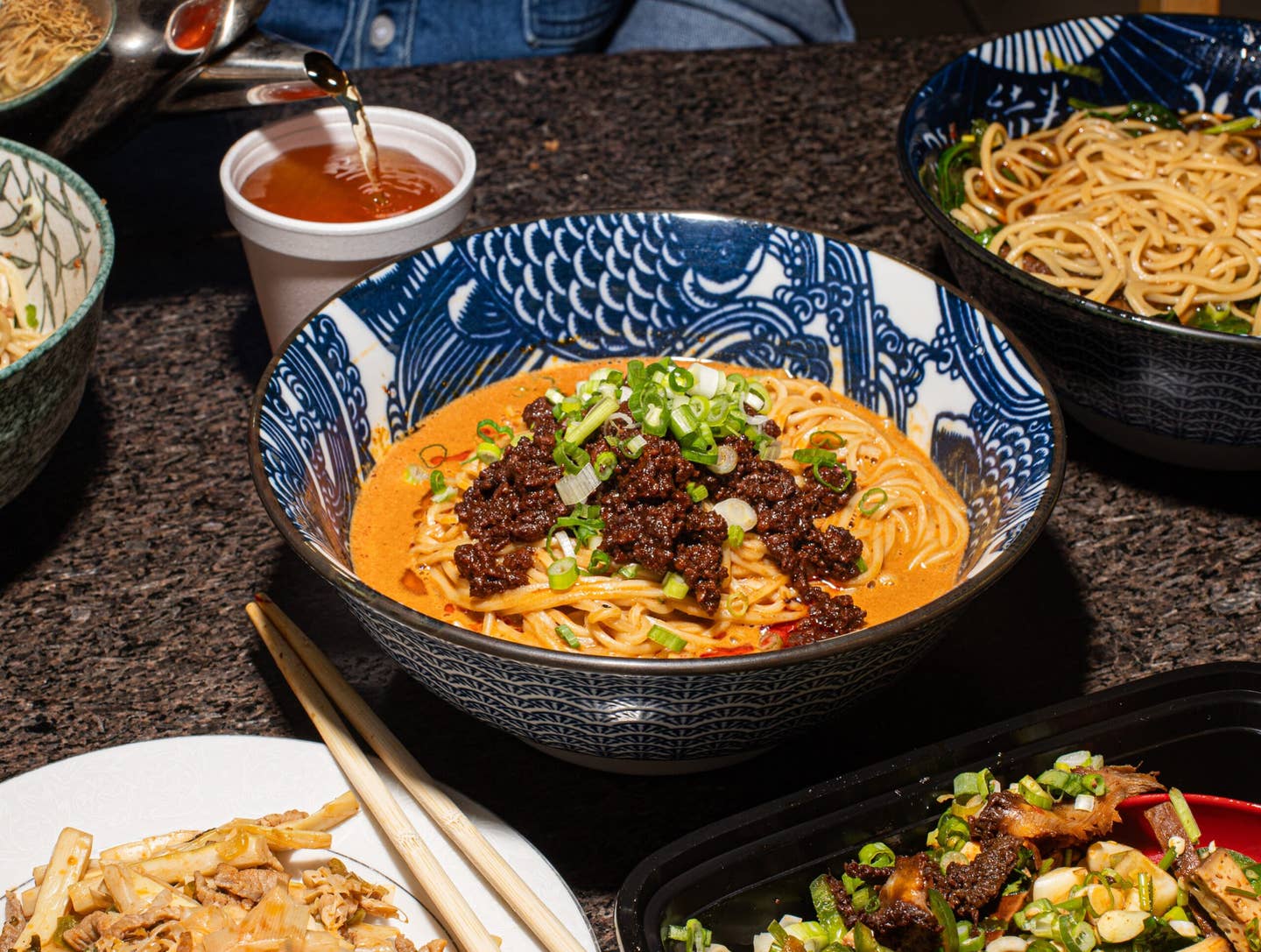How to Serve Champagne Like a Pro at Home
According to the somm at Northern California’s buzziest new restaurant.

Cyrus Schultz thinks Champagne is always a good idea. Born and raised in Maui, Schultz cut his teeth serving wine in celebrated fine dining establishments throughout Hawaii and California, including Roy’s in Maui, Benu in San Francisco, and the French Laundry in Napa Valley. When the now-sommelier signed on to run the wine program at Sonoma County’s Cyrus (the shared name is a coincidence), he took great care to ensure that the restaurant’s aperitif service set the tone for the whole meal. That’s why, heading into year-end festivities, I reached out to him for advice on how to serve Champagne at home like a pro—from optimal glassware to perfect food pairings.
If ever there was a time for the Cyrus team to break out the Champagne, it’s now. The Northern California wine region’s most anticipated new restaurant of the year, Cyrus is actually about to embark on a new chapter. After a lease dispute in their intimate and widely loved original location, co-owners, chef Doug Keane and mâitre’d Nick Peyton abruptly closed up shop a decade ago. This September, after years of false starts and pandemic woes, the pair finally opened the doors on this second act. Barely three months later, reservations for the 17-course tasting menu are booked solid, and the team recently took home Cyrus 2.0’s first Michelin Star.
The morning before the Michelin news came through, I happened to be on the premises, scoping out the space and sipping a graciously poured glass of bubbles before dinner service. The room was designed as a reimagining of the famed pre-dinner Champagne and caviar cart guests had come to love at the original location. Diners begin their meal with bubbly and small bites overlooking acres of surrounding vineyards and, beyond that, the rolling hills of the Alexander Valley. Even in the daytime, an understated luxe permeates the room. “It's hard to not fall for the space,” Schultz tells me. “We offer three seatings each night, and for each of those, we’ve built in a half an hour where you can just sit, get a glass of Champagne, and watch the seasons change over the vineyards.”
Whether you’re hosting everyone you know this season, or are looking to make the most of a special bottle with your favorite dinner companion, your evening deserves just as much. Here are Schultz’s tips for bringing a little bit of Cyrus’ Champagne chic into your own home.
The Glassware:
At Cyrus, stemware is the first thing diners bring to their lips, so Schultz was acutely aware just how important it would be to choose the proper champagne glass. In the Lounge, he uses Zalto tulips to serve all effervescent pours. “You want something that doesn’t cage all the flavors,” he explains. “A more generous glass shape allows the wine to be more expressive and speak louder” than it might in a standard, straight-sided flute.
For elevating the Champagne experience at home, glassware is the clear place to start. If your space or budget demands that you streamline your options, though, Schultz finds that sparkling wines can shine just as brightly in an elegant, all-purpose white wine glass that “lets the bubbles breathe a little.” (He uses the Sophienwald brand at home.)
Feeling festive, or setting up a Champagne fountain? “I also do love a coupe,” he admits. “For the right time and occasion, with a wine that’s fresh and vibrant and super-cold, a coupe can make you feel like you're in that Great Gatsby era.” In other words, the glass sets the mood. “Coupes may not be the most functional, but sometimes they make you feel great, and how you feel when you're drinking something is so important, too.”
Keep it Cold:
When it comes to Champagne, you’re going for cold—significantly colder than other white wines, but not freezing. “You don't want your champagne so cold that its flavors start to close down,” Schultz warns; he suggests aiming for somewhere around 46 degrees Fahrenheit (or a touch colder for non-Champagne sparklers, like cremant or Prosecco).
The reason for this chilly temp boils down to physics. With still wines, proper temperature is all about flavor and fragrance, but with bubbles, temperature also has an impact on texture. Rising temperatures cause carbonation to expand, resulting in a more open mousse (i.e. fatter bubbles). “Effervescence is a texture rather than a flavor,” Schultz explains, “and there's a point where the mousse behaves on the palate in a way where the wine just sings. I usually like Champagne to be very finely, tightly wound, and have that really delicate bead, but depending on the wine, sometimes it can warm up a touch, and become much more expressive.”
How can you tell when a bottle is cold enough? After years in the business, Schultz relies on instinct and physical touch, but admits that, for most, this method is not precise. For a 750-milliliter bottle, three hours in the fridge is a safe minimum starting point. An ice bucket can be faster and convenient, but Schultz reminds us that when using one, the bottle should be fully submerged in order to chill evenly. (Also remember that magnums and larger bottles take substantially longer to chill than those standard 750s.)
Food Pairings:
For nibbles to pair with their Champagne, chef Keane sends guests dainty canapés—often featuring uber-luxe ingredients like wagyu and truffles—to tease the lengthy dinner to come. They may also choose to enjoy a serving of caviar. While the ingredients are lavish, the bites are intentionally petite.
For a more casual—yet still elevated—home experience, Schultz likes to offer more generous portions of simple, fatty foods: think fried chicken or potato chips, or the occasional silky slice of foie gras. With fuller, fruitier rosé Champagnes, though, he prefers to veer in another direction, looking to his home state for inspiration: raw tuna, seasoned with scallion, soy sauce, sesame, and inamona salt. “Rosé has enough power to stand up to the rich, oily nature of ahi,” he tells me. “Don’t sleep on rosé Champagne and ahi poke!”
The Main Event:
Schultz built Cyrus’s 800+ bottle wine menu from scratch; today, the restaurant’s cellar boasts just over a hundred Champagnes (and a handful of stand-out Sonoma sparklers). Rare vintages from well-known marquee houses are listed alongside niche grower-producers, and while many of the selects are near impossible to find outside of private collections and wine-focused restaurants, some of the somm’s favorites are available in stores. In the $40 to $60 price range, he suggests seeking out Chartogne-Taillet, Pierre Peters, or the consistently delicious Pol Roger.
For folks looking to splurge, Schultz points to Krug or cult favorite Salon—an early pioneer of the Blanc de Blancs style which only produces wines in the most exceptional of vintages. “[Salon] only makes one wine, so you know it's going to be delicious. You don't have to do all this homework about, ‘was that a good vintage or a bad one?’ They've done it all for you—but it is a splurge!”
A Note on Gifting Champagne Like a Pro:
Schultz has thoughts on gifting Champagne, too. “The biggest thing I try to let people know is that if I'm giving them a bottle of Champagne, I’m saying, ‘Hey, this is something for you to drink and enjoy now.’” Recipients of wine gifts may instinctively save the bottle for another special occasion, but Schultz reminds us that the holidays are about enjoyment and fun. “Nothing does that like opening a bottle of Champagne.”
Keep Reading
Continue to Next Story










